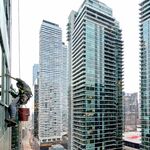lead82
Senior Member
The stations along Eglinton certainly wont be the busiest, especially those east of DVP. It makes sense to have stops closer together in dense areas, but not in suburban areas. The stops on Eglinton resemble the proximity to that of the B-D line. Especially towards the east end when stops are less than 500m apart.
Toronto is good at building local transit, but that is not what we need. Toronto needs to improve the time it takes to get around. This line should have been designed with some speed in mind to find a good balance between serving local stops but also allowing for a fairly fast ride across the middle of the city.
Toronto is good at building local transit, but that is not what we need. Toronto needs to improve the time it takes to get around. This line should have been designed with some speed in mind to find a good balance between serving local stops but also allowing for a fairly fast ride across the middle of the city.




